A pair of Costa Rican retreats brings a refined aesthetic to a spectacular site
Formafatal designs a pair of Costa Rican retreats; two minimalist villas for a maximalist plot in the heart of the jungle
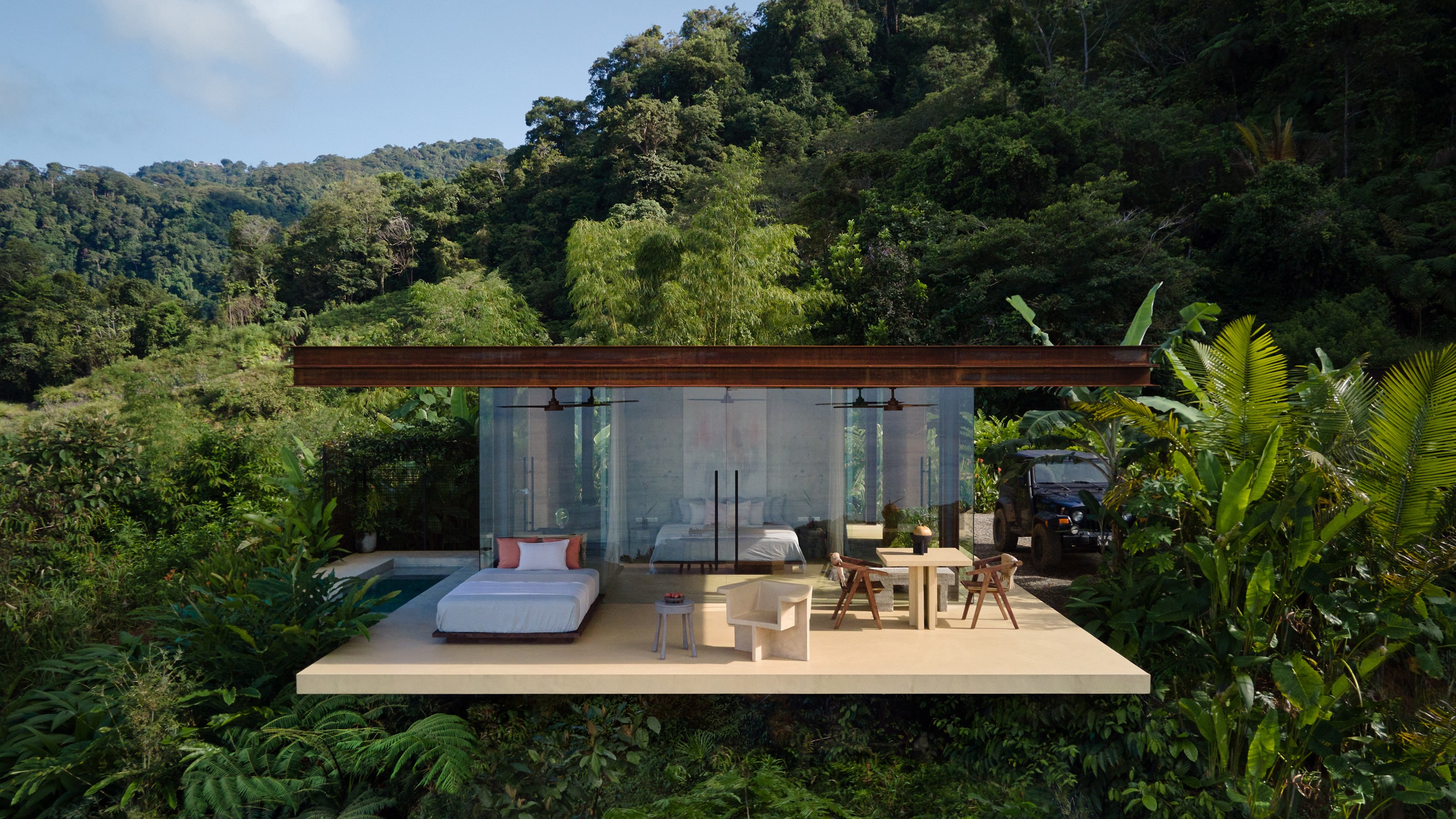
On a lushly forested ridge in the jungle, a pair of Costa Rican retreats peep out of the vegetation, cantilevered above the leaves and fronds to provide distant ocean views. Designed by the architect Dagmar Štepánová of Estudio Formafatal, a practice that splits its time between Costa Rica and the Czech Republic, the two small holiday villas in Uvita look due south to Bahia Ballena (‘Whale Bay’) on the Pacific coast.
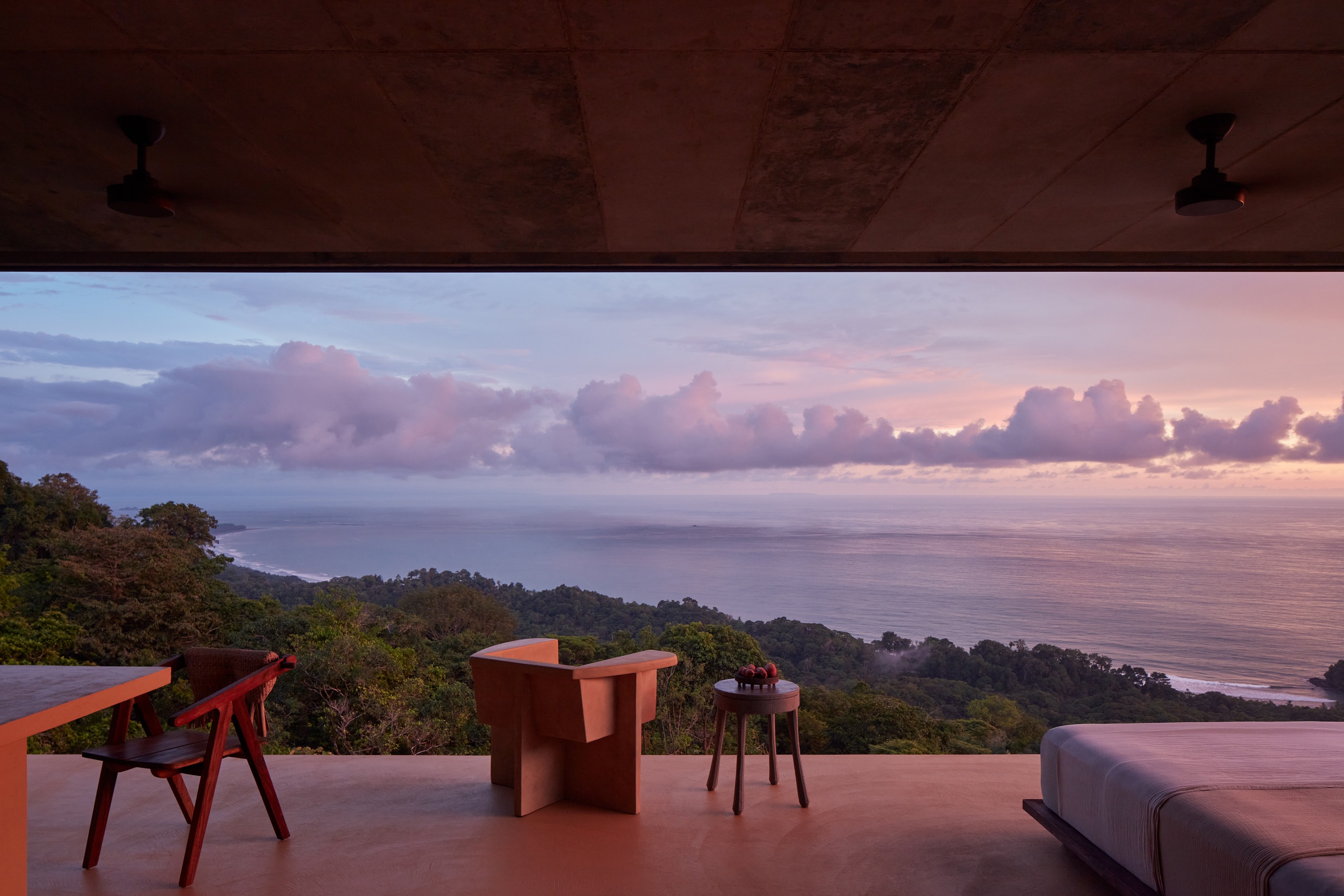
A set of Costa Rican retreats by Formafatal
These identical floorplans are the epitome of simplicity. Each is essentially a single room, consisting of large centrally placed bed, behind which is a bathroom, kitchenette, and storage space. The bulk of the walls are glazed and slide open to the surrounding terraces. These are generous enough to house a daybed, dining area and small infinity plunge pool.

Each villa has its own distinct identity, defined by the colour choices and furnishings, balancing each other in a classic yin/yang relationship. Jaspis Villa, named for the Czech word for the light quartz Jasper, is paired with Nefrit Villa, named for the word for the typically darker Jade.

Jaspis is finished in light, sandy shades, intended by the architects to connect with the ocean and the sky. In contrast, the Nefrit Villa, with its red terracotta floor slab and terrace, is designed to feel closer in spirit to the ground and the surrounding jungle.
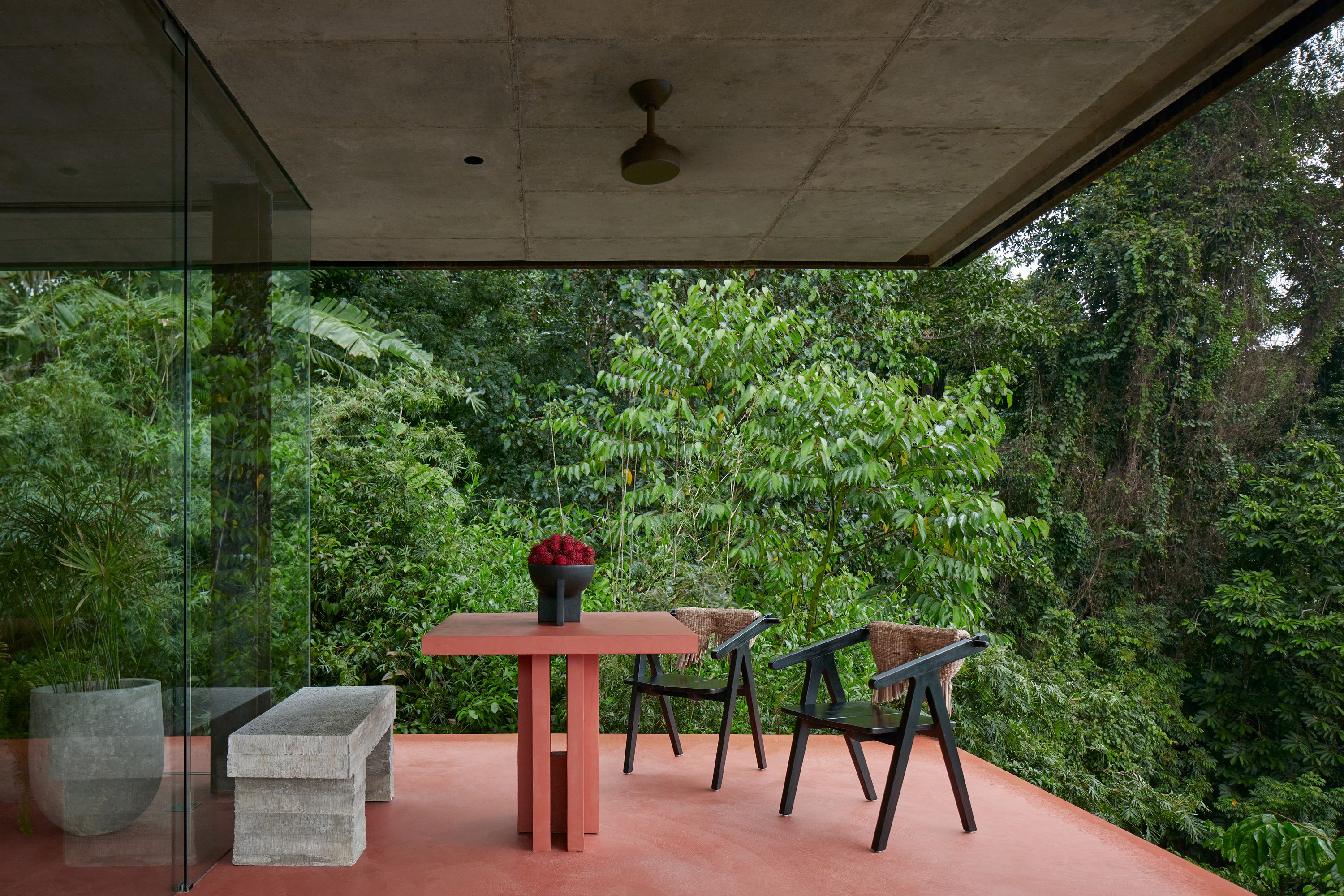
In addition to concrete and steel, the two villas make extensive use of rammed-earth construction, using the clay soil excavated for the foundations to form the perimeter load-bearing walls.
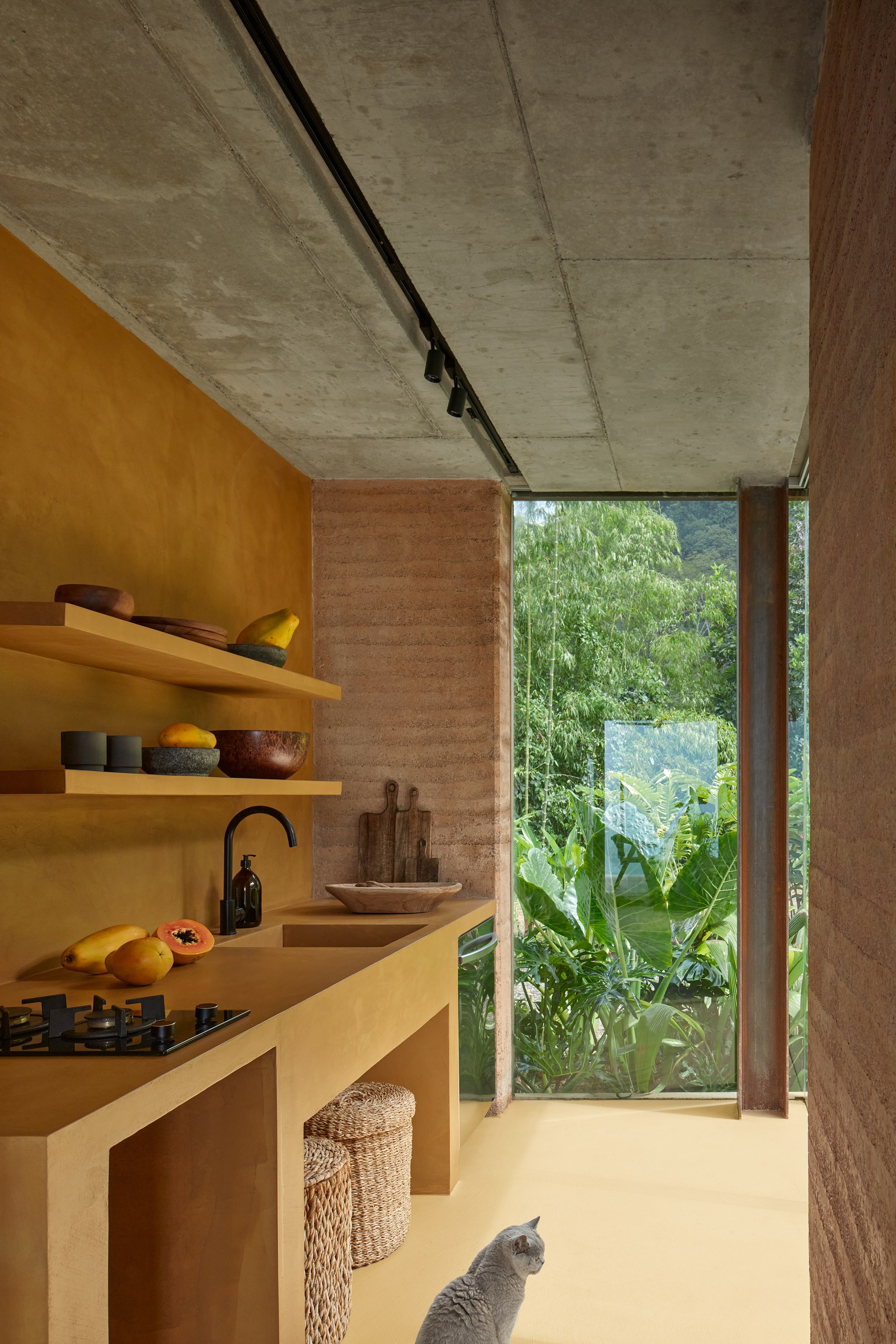
The plot is 300m above sea-level, giving far-reaching views across the bay. Each villa is around 90 sq m, but the interiors appear to expand outwards into the surrounding landscape. The horizontal and vertical compositions are a deliberate foil to the jungle, but the colour palettes, inside and out, harmonise with the foliage.
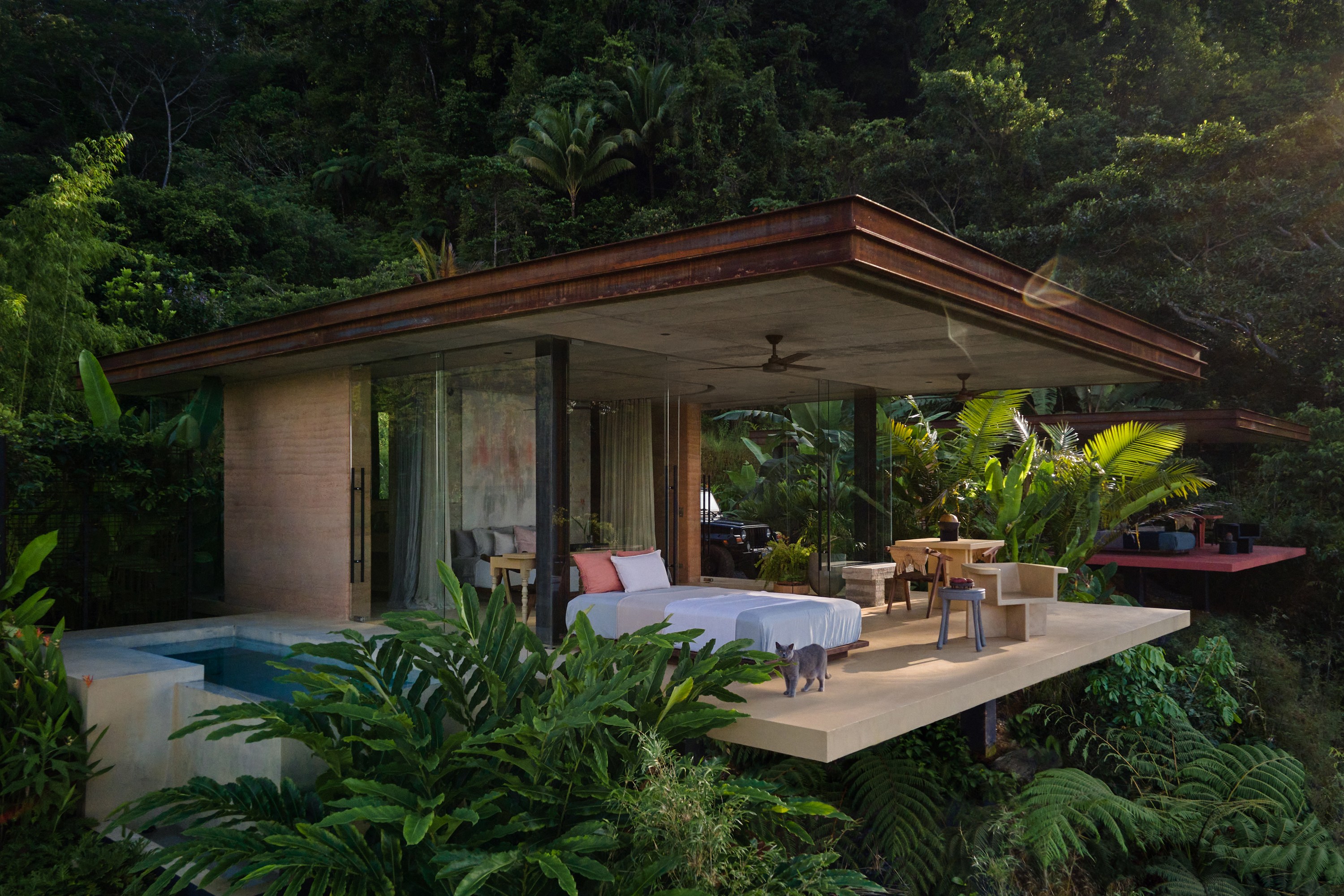
Although they’re set just 12m apart, the plot has been densely planted in order to preserve a strong sense of privacy and splendid isolation. The views don’t reveal themselves until you’ve stepped inside; once there, they dominate the interior.
Receive our daily digest of inspiration, escapism and design stories from around the world direct to your inbox.
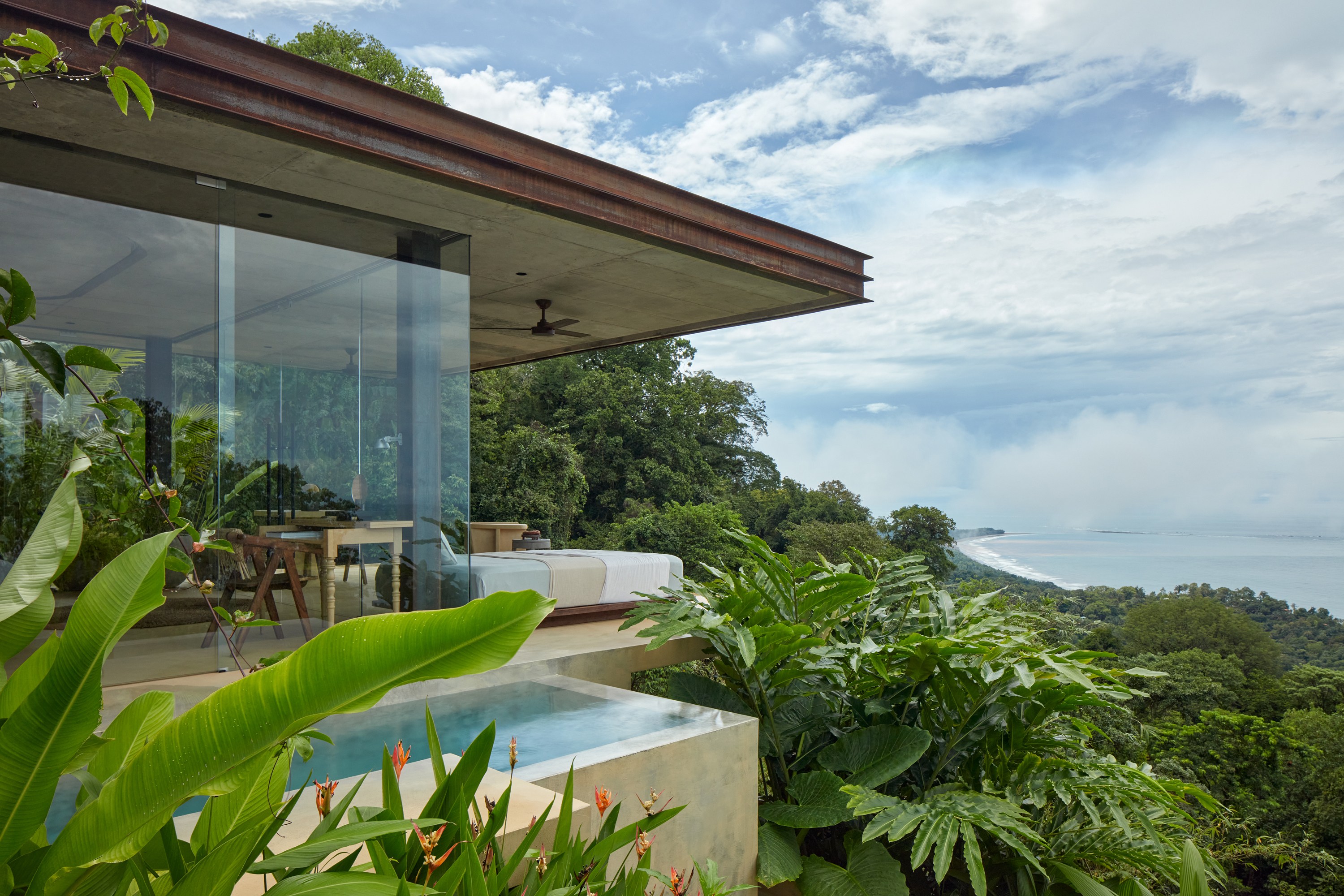
Štepánová and her team have focused intently on all the details, ensuring that like handles and tracks were recessed into the concrete slab to keep surfaces clean and minimal. Cast concrete is also used for the bespoke furniture in each villa, coloured to match the concrete screeds. The kitchen, desk, sink unit, tables and benches are also formed from concrete. The architect cites the sculptural work of the Belgian designer Bram Vanderbeke as inspiration.

This is a high-humidity environment, and elements like the rammed-earth walls were hitherto unknown in the country. A Brazilian specialist, Terra Compacta, trained up local craftspeople to create Costa Rica’s first piece of rammed-earth architecture.

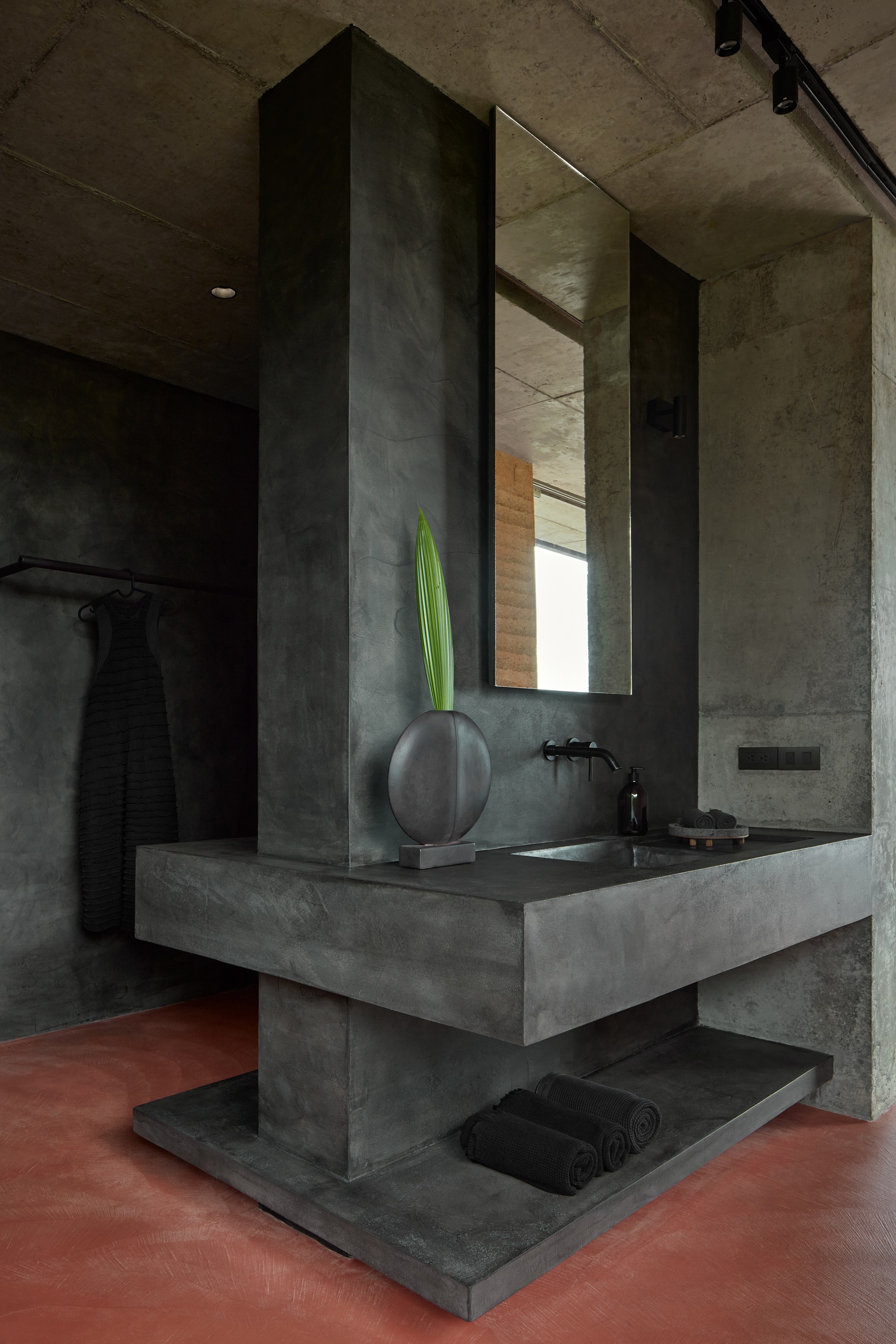
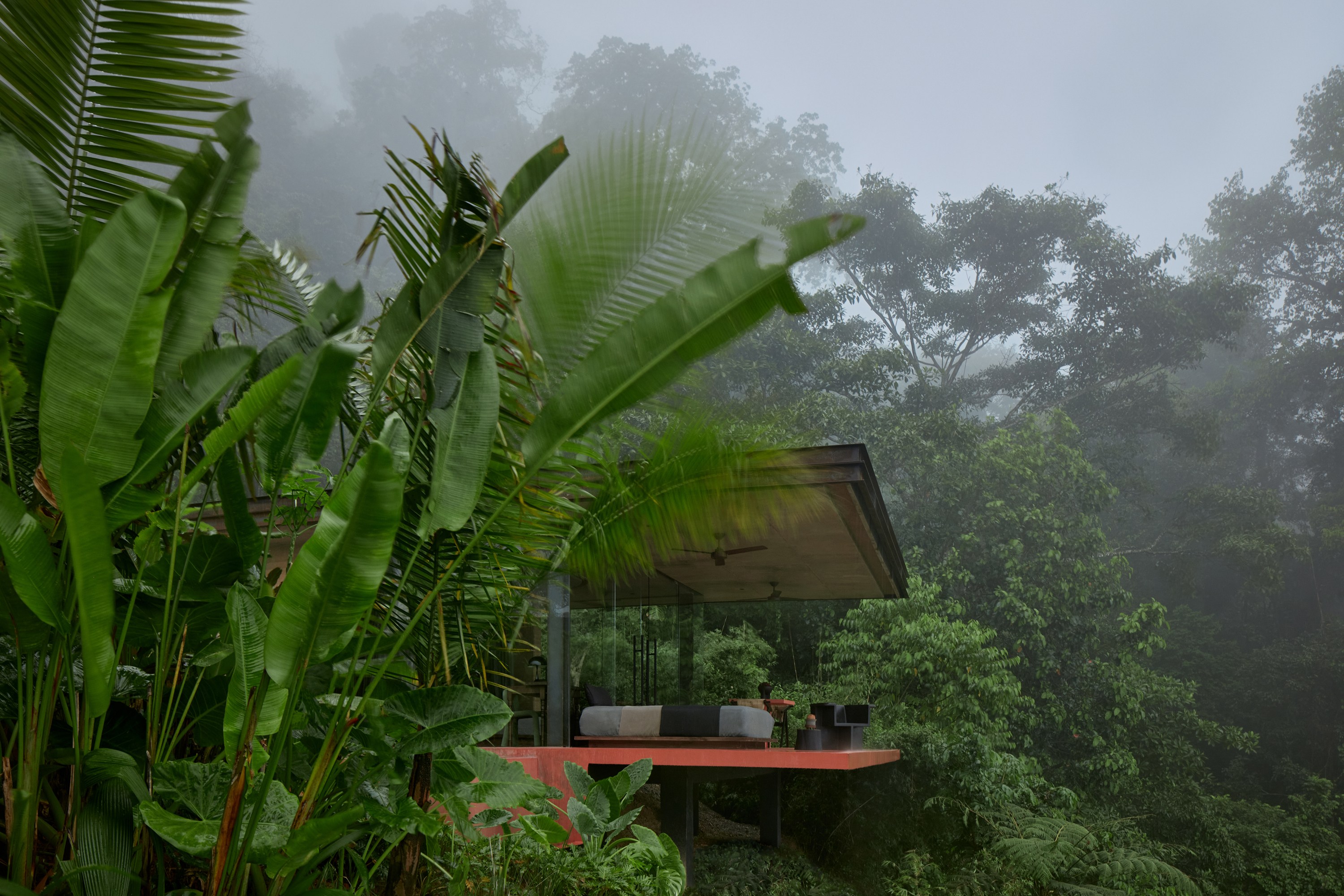
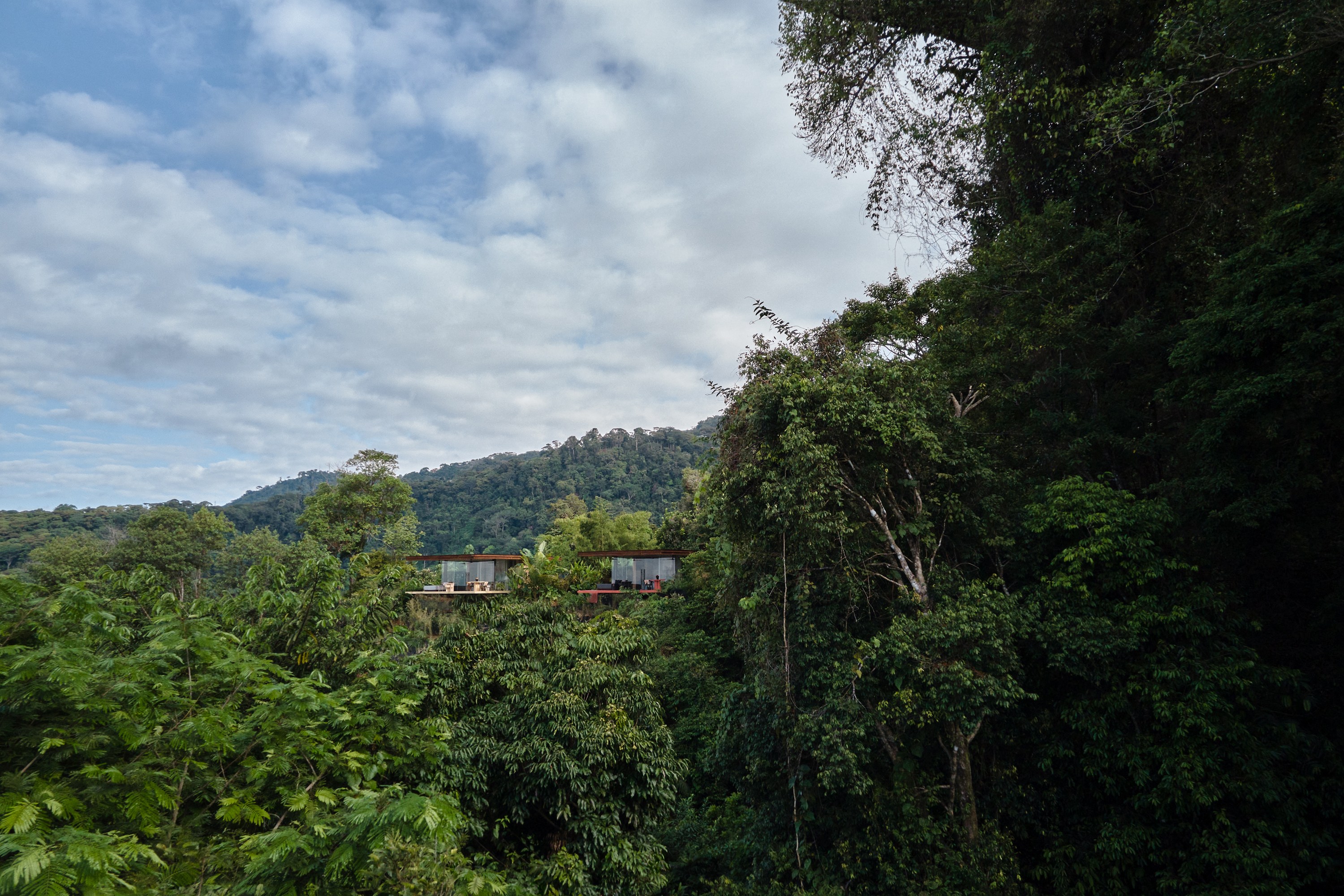
Jonathan Bell has written for Wallpaper* magazine since 1999, covering everything from architecture and transport design to books, tech and graphic design. He is now the magazine’s Transport and Technology Editor. Jonathan has written and edited 15 books, including Concept Car Design, 21st Century House, and The New Modern House. He is also the host of Wallpaper’s first podcast.
-
 At last: a London hotel that’s great for groups and extended stays
At last: a London hotel that’s great for groups and extended staysThe July London Victoria, a new aparthotel concept just steps away from one of the city's busiest rail stations, is perfect for weekends and long-term visits alike
-
 Three new smartwatches showcase new frontiers in affordable timepiece design
Three new smartwatches showcase new frontiers in affordable timepiece designLong may you run: smartwatches from Withit, Kospet and OnePlus favour function and value above all else, demonstrating just how much the smartwatch has evolved in recent years
-
 Debuts, dandies, Demi Moore: 25 fashion moments that defined 2025 in style
Debuts, dandies, Demi Moore: 25 fashion moments that defined 2025 in style2025 was a watershed year in fashion. As selected by the Wallpaper* style team, here are the 25 moments that defined the zeitgeist
-
 The Architecture Edit: Wallpaper’s houses of the month
The Architecture Edit: Wallpaper’s houses of the monthFrom Malibu beach pads to cosy cabins blanketed in snow, Wallpaper* has featured some incredible homes this month. We profile our favourites below
-
 Formafatal ventures deep into the Costa Rican jungle with Studio House, a spectacular retreat
Formafatal ventures deep into the Costa Rican jungle with Studio House, a spectacular retreatSet high on a forested hillside, the Studio House has far-reaching ocean views yet is completely integrated into its site
-
 Step inside a coastal Costa Rican retreat that floats amid the palm trees
Step inside a coastal Costa Rican retreat that floats amid the palm treesCasa Solai, by local firm Studio Saxe, prioritises sustainability as much as beauty
-
 Makai Villas nestle into the Costa Rican treetops, embracing Pacific Ocean views
Makai Villas nestle into the Costa Rican treetops, embracing Pacific Ocean viewsMakai Villas, by Studio Saxe, are a trio of sustainably minded residences poised on the leafy terrain of Costa Rica
-
 Modernist architecture: inspiration from across the globe
Modernist architecture: inspiration from across the globeModernist architecture has had a tremendous influence on today’s built environment, making these midcentury marvels some of the most closely studied 20th-century buildings; here, we explore the genre by continent
-
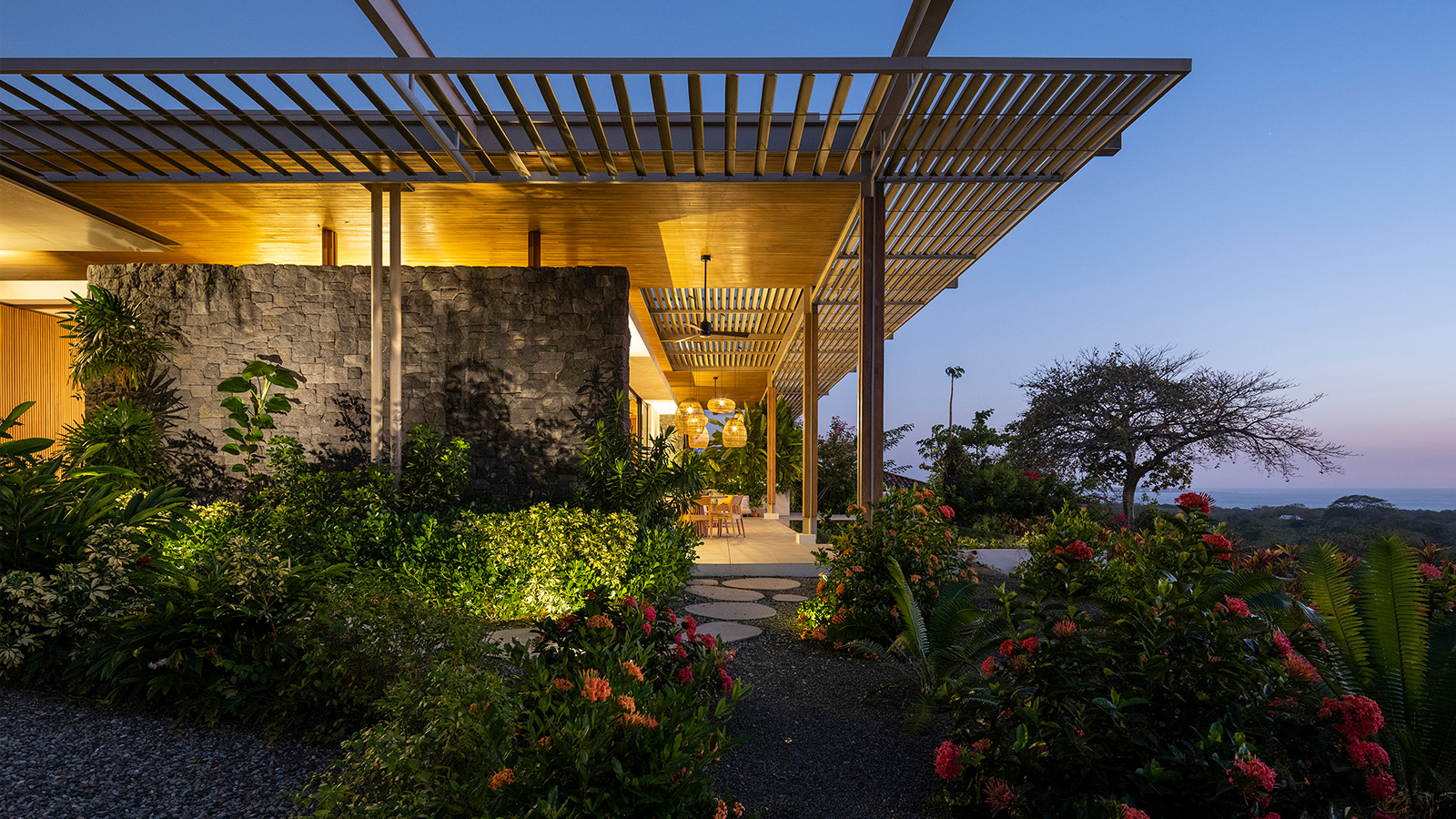 Take a tour of Pergola House in Costa Rica – a leafy residence open to the elements
Take a tour of Pergola House in Costa Rica – a leafy residence open to the elementsBased in Costa Rica, Pergola House by Studio Saxe is a serene escape that blends indoor and outdoor living
-
 Minimalist architecture: homes that inspire calm
Minimalist architecture: homes that inspire calmThese examples of minimalist architecture place life in the foreground – clutter is demoted; joy promoted
-
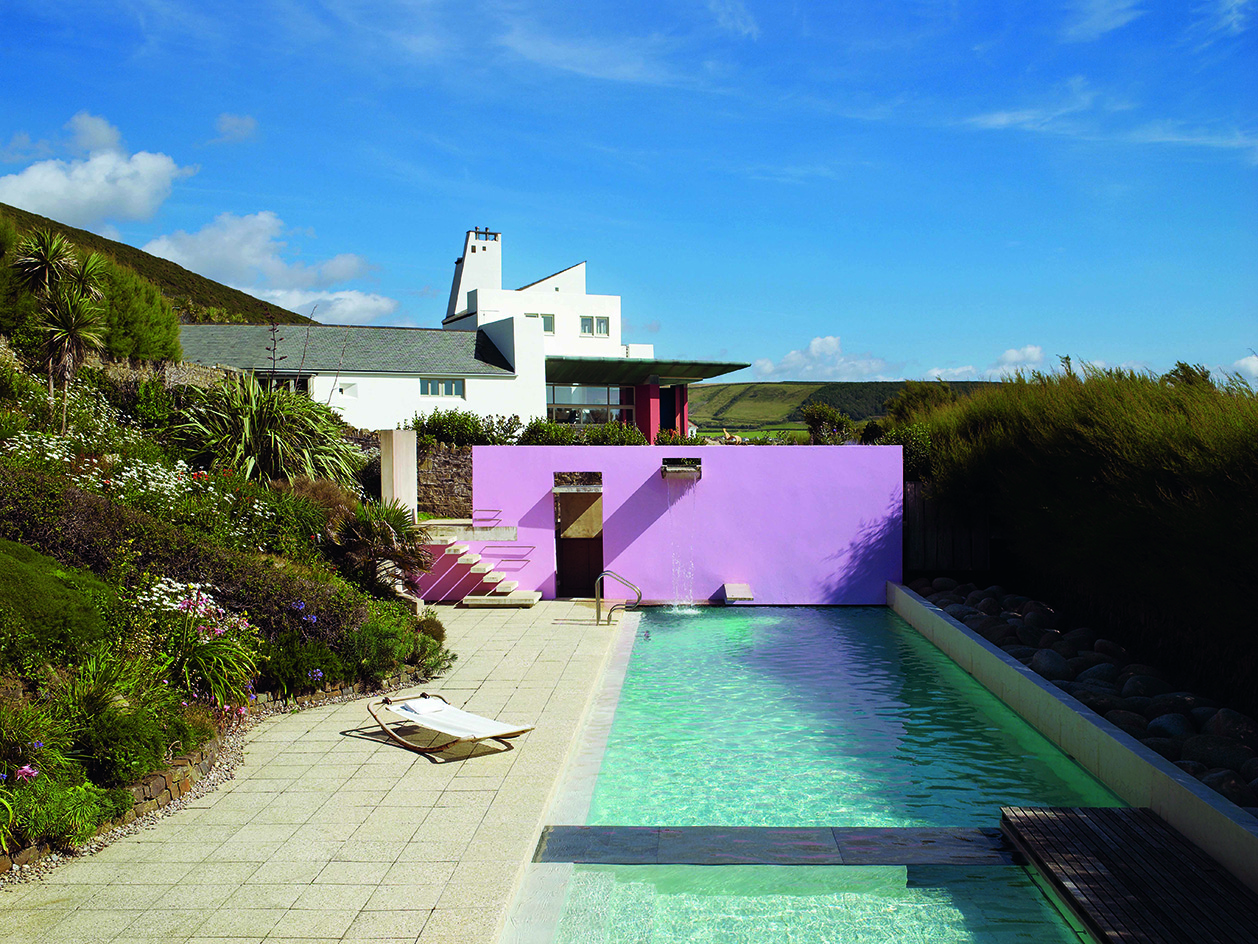 The iconic British house: key examples explored
The iconic British house: key examples exploredNew book ‘The Iconic British House’ by Dominic Bradbury explores the country’s best residential examples since 1900